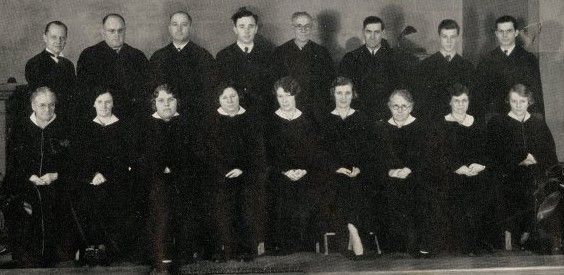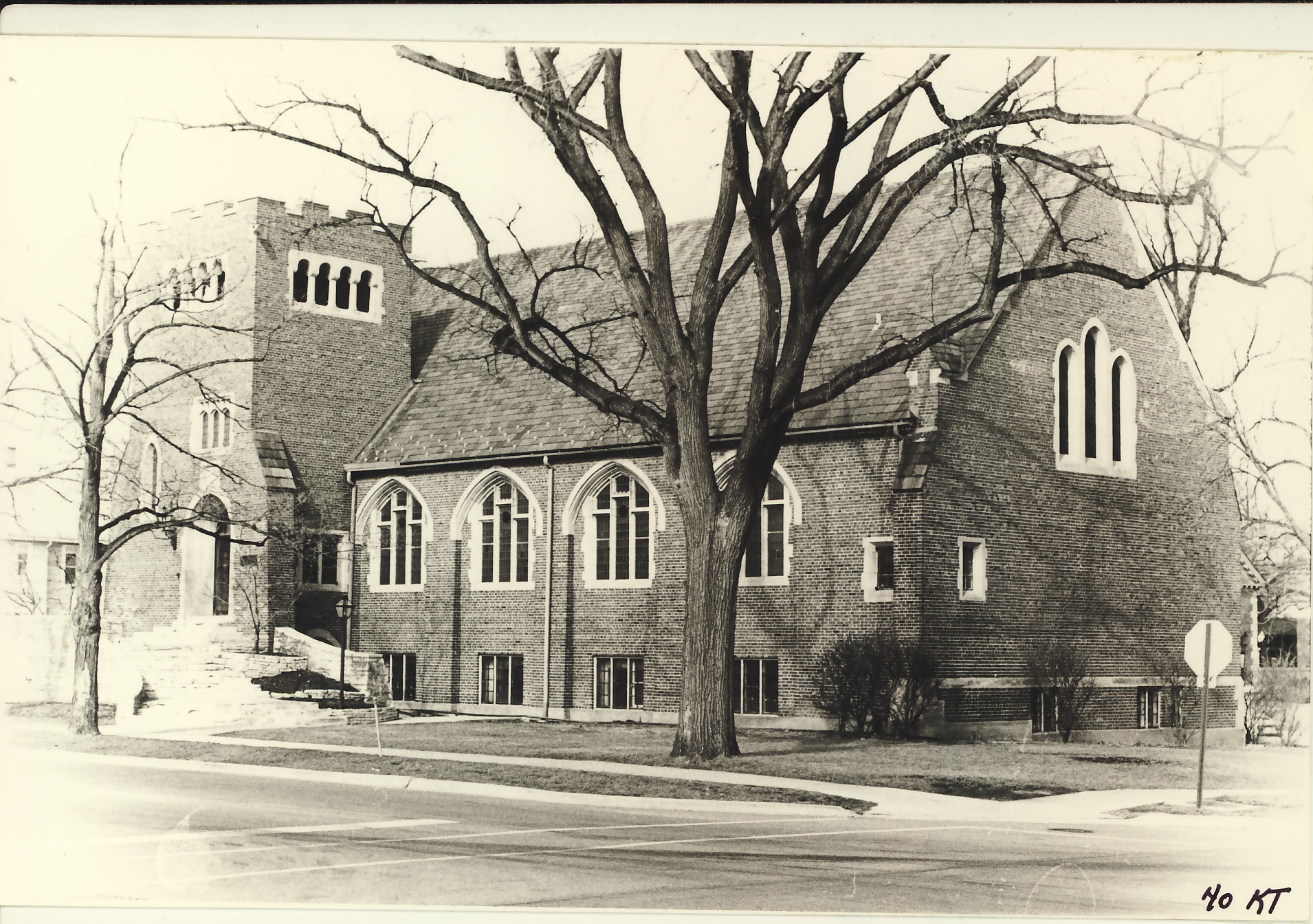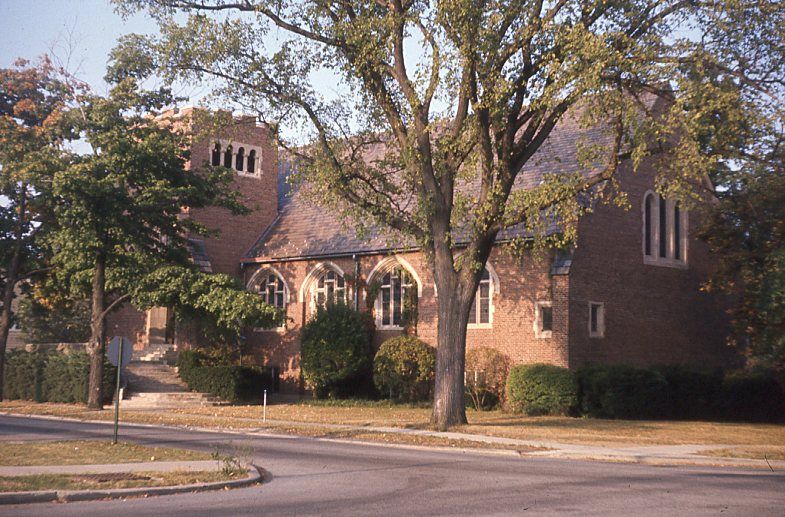
Members of the Methodist Church choir.


Members of the Methodist Church choir.

The church shown on the corner of Deerpath and McKinley, next to the library.
The church located on the northeast corner of Deerpath and McKinley has presented something of a mystery to local residents for years. Its origins, however, are strongly rooted in the community.
The church was designed by famed architects Howard Van Doren Shaw and Ralph Milman and was dedicated in 1923. It was originally built for use by the Methodist Episcopal Church. The structure is in the Tudor style, with a large brick belltower with a crenelated top, arched doorways, and pointed-arched windows. In the sanctuary, there are four pointed arch stained glass windows along the nave, and at the south end of the nave, there is a triple pointed window with the central glass piece higher than the flanking units. In the 1920s and 1930s the church was a vibrant place that hosted secular and religious events including performances, lectures, circle talks, and classes.This age of legerity did not last long. In 1937, rumors began circulating that the church was going to be closing its doors. In early 1940, this came true. The church then sat empty, though by 1946 it found a use as a recreation center for servicemen and women.
The next year, it was acquired by the Church of the Covenants, a non-denominational Protestant community which had previously met in the Deerfield Town Hall. The Church of the Covenants was soon led by a new reverend who later tried to sell the church building several times, albeit unsuccessfully. These market listings were likely a result of a series of scandals in which the church was involved, many of which began in the 1970s, which were reported in the newspapers of the time. These scandals included accusations by church leaders against their own members of witchcraft and of heresy, supposed possessions by the devil, dishonest tithes, tax evasion, and “lying prophets.” The church rarely offered comments on these incidents, and nearly always won cases in court without any compromise.
The church now leads a quieter existence out of the spotlight, keeping its gardens clean and doors usually locked. The church has commented in town hall meetings that it would like to have a piece of property with more open green space than the current corner on McKinley.